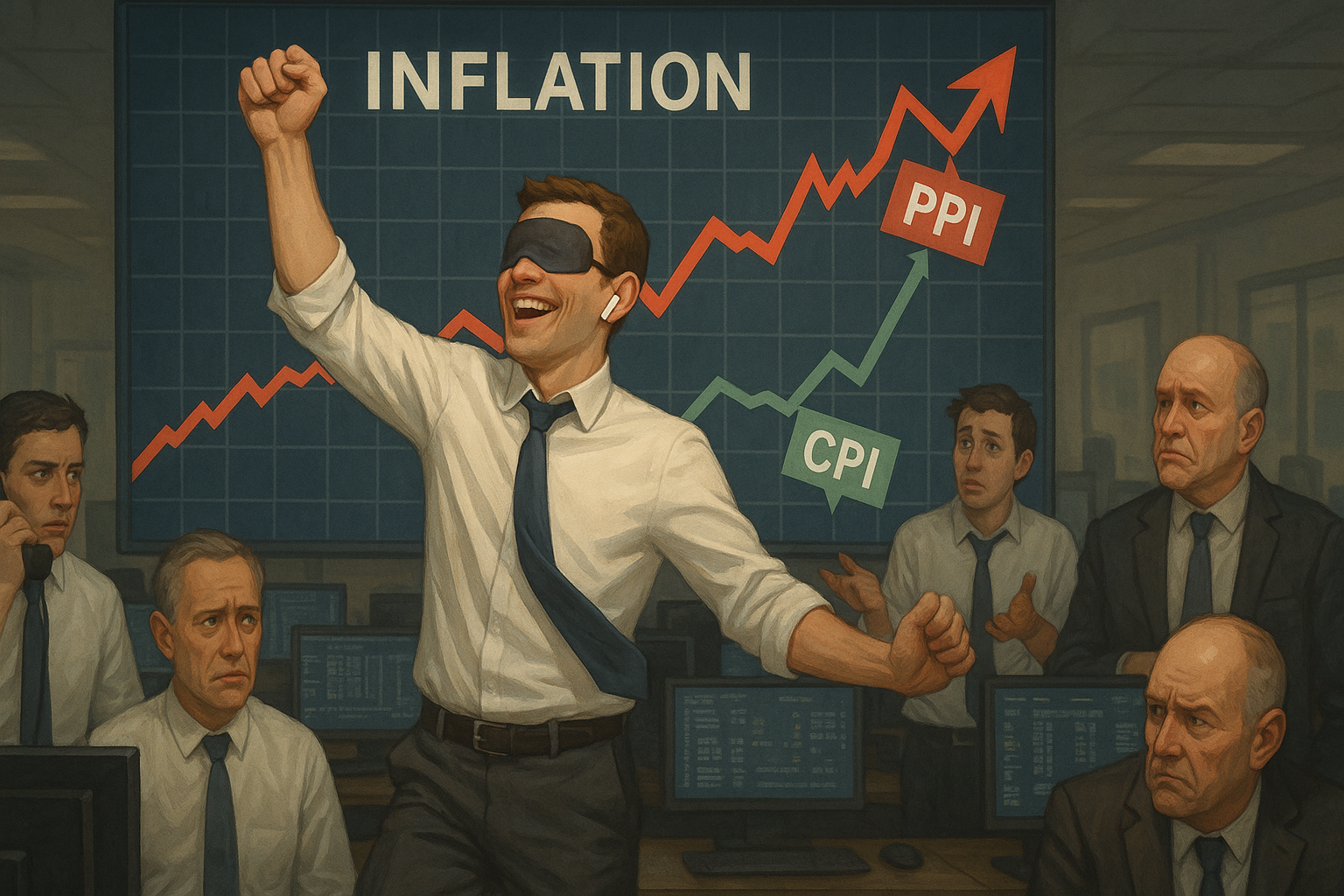Wall Street just can't seem to make up its mind this week.
In what can only be described as a masterclass in selective hearing, investors pushed the S&P 500 to fresh highs despite inflation numbers that—if we're being honest with ourselves—should have sent traders running for the exits faster than rats from a sinking ship.
Monday kicked off with semiconductor heavyweights NVIDIA and AMD agreeing to fork over 15% of their China chip sales revenue to Uncle Sam. It's essentially a "please let us keep selling to countries we're in complicated relationships with" tax. The market barely blinked. Meanwhile, Trump pushed back his China tariff deadline by 90 days and declared gold would remain tariff-free. Not exactly earth-shattering stuff, and markets closed slightly lower.
Then came Tuesday's CPI report.
Inflation increased 2.7% year-over-year—better than the expected 2.8%—and suddenly Wall Street was popping champagne bottles. Never mind that this figure still sits well above the Fed's 2% target that everyone supposedly cares about. The S&P 500 charged past 6,400 for the first time, as if slightly-less-bad inflation was somehow cause for celebration.
Look, I've covered markets for years, and this kind of wishful thinking isn't new. But the disconnect between data and reaction seems particularly glaring this time around.
Wednesday only fueled the fantasy when investor Scott Bessent publicly demanded (yes, demanded) the Fed cut rates by 50 basis points in September. His argument? Rates should already be 150-175 basis points lower. It's like watching someone insist on painkillers before the doctor's even checked for injuries. Markets, predictably, ate it up, with rate cut probability reaching an almost comical 99.8%.
And then Thursday happened.
PPI inflation jumped 0.9% monthly—the biggest leap since June 2022. Core PPI wasn't any better, rising at its fastest clip since March 2022, with year-over-year gains hitting 3.7%.
This is what economists call "a problem." What did markets do? After initial losses, they recovered to close... higher. By a microscopic 0.02%, but still. It's as if the entire financial community collectively decided to plug their ears and hum rather than process uncomfortable information.
(I checked with several traders who confirmed they were, indeed, ignoring the data in favor of the prevailing rate-cut narrative.)
Friday finally brought a dose of reality when Michigan's inflation expectations rose to 4.9% from 4.5%. The market reluctantly acknowledged this warning sign, breaking its three-day winning streak to close lower.
What we're witnessing here is market cognitive dissonance in its purest form. The story investors have fallen in love with—"inflation is cooling, rate cuts are coming, buy everything"—is being challenged by actual data. But narrative momentum is a powerful force. The stronger it gets, the more contradictory evidence gets dismissed as "noise."
We've seen this movie before... housing bubble, dot-com boom, you name it. The script remains eerily similar.
Will the Fed cut rates? Probably. Political pressure is mounting, and heaven forbid we disappoint the markets. But pricing in cuts as a near certainty while inflation flashes warning signs? That's asking for trouble.
So here's the million-dollar question: Do you want to be the one who stops dancing while the music's still playing, or the one left scrambling when it suddenly stops?
Despite genuinely concerning inflation data, the S&P closed at 6,449.79, up nearly 1% for the week. The party continues—for now.
But remember—narratives change in an instant. Markets run on emotion as much as data. That 6,200 level some analysts mention as a stop-loss point? Might not be a bad idea in a market currently running more on hope than reality.




